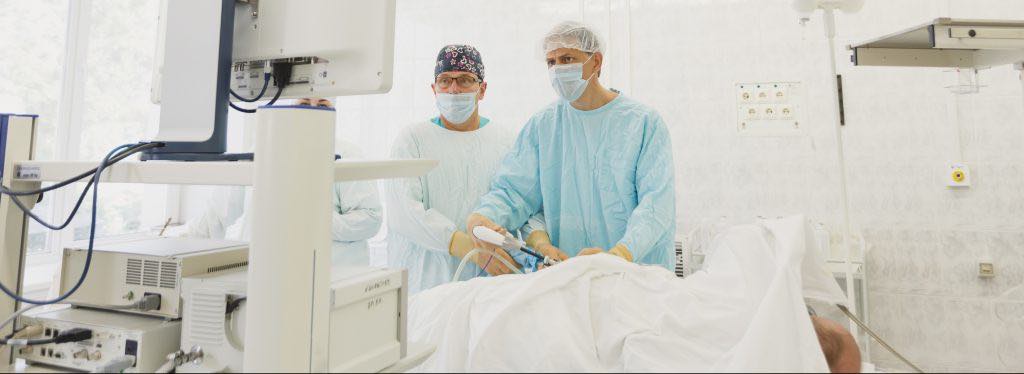According to the National Women’s Health Network, approximately 20 million American women have had a hysterectomy. Rather than the total abdominal hysterectomy (TAH), more doctors are turning to the less invasive option of laparoscopic surgery for their hysterectomy patients. There are three different types of laparoscopic hysterectomy that may be used as treatment options for everything from fibroids to cancer of the ovaries.
Types of laparoscopic hysterectomy
A hysterectomy refers to the total removal of the uterus, including the cervix. It may or may not involve the removal of ovaries and fallopian tubes. Other variations of this surgery may include the preservation of certain organs when removal isn’t required. There are two types of hysterectomy, either traditional (through the vagina or abdomen) or laparoscopic (also through the vagina or abdomen). In a study released in the Journal of Obstetrics and Gynecology, “81.5% of [hysterectomy] surgeries were performed laparoscopically and 16% [traditional] vaginally…the laparoscopic surgeries were associated with a shorter length of stay.” It is now much more common for hysterectomies to be laparoscopic than traditional.
There are many differences between each type of hysterectomy. Your doctor may recommend a certain procedure based on your medical history, current condition, and overall health. Learn more about the different types of laparoscopic hysterectomy below.
What is a total laparoscopic hysterectomy (TLH)?
A total laparoscopic hysterectomy is one of the most common types of laparoscopic hysterectomy. This procedure removes the uterus and the cervix via the abdomen. The incisions from a TLH are small dots that require just a few stitches. As of 2009, it was reported that an “abdominal hysterectomy [as opposed to a vaginal hysterectomy] remains the most common surgical approach, with well over half of hysterectomies being performed via a laparotomy.”
An abdominal hysterectomy, in the traditional surgical style, would require a larger incision. There are a few reasons why your doctor may recommend an abdominal incision over a laparoscopic procedure for a total hysterectomy. These depend on each individual’s medical situation and may include either a previous abdominal surgery, endometriosis, or pelvic pain.
In a clinical trial of women with early-stage endometrial cancer, it was found that there is no difference in overall survival rates in a TLH versus a traditional total abdominal hysterectomy. Laparoscopic hysterectomies offer shorter, less painful recovery times than open hysterectomies.
Who needs a total laparoscopic hysterectomy?
A TLH is referred to as “lifesaving for those suffering from gynecological cancers or the severe pain and heavy bleeding due to fibroids or endometriosis,” by the California Pacific Medical Center. It is a treatment for cervical and uterine cancer. Other reasons for performing a total hysterectomy include:
- Fibroids and heavy periods that cannot be managed
- Pelvic pain often caused by endometriosis
- Pelvic inflammatory disease
- Adenomyosis
- Cancer in the womb, ovaries, and the cervix
- Prolapsed uterus
What is laparoscopically assisted vaginal hysterectomy for total removal?
A laparoscopically assisted vaginal hysterectomy (LAVH) removes the uterus and cervix, similar to a total laparoscopic hysterectomy. However, during this procedure, the main incision is in the vagina instead of the abdomen. This causes less trauma and decreases healing time compared to the TLH abdominal incision. Consequently, a surgeon that recommends TLH versus LAVH should have a clear medical reason for this preference.
Who needs a laparoscopically assisted vaginal hysterectomy?
The medical reasons for a laparoscopically assisted vaginal hysterectomy are similar to those of a TLH through the abdomen. This includes everything from fibroids to pelvic pain.
A patient is a candidate for a laparoscopically assisted vaginal hysterectomy if she hasn’t had abdominal surgery, doesn’t have other women’s health concerns (such as a prolapsed uterus), and her risk for cervical cancer is low. A common reason for opting for TLH over a LAVH would be a prolapsed uterus. A prolapsed uterus occurs with the weakening of the pelvic floor muscles which causes the uterus to potentially drop from the vagina.
What is a partial laparoscopic hysterectomy?
Unlike other types of laparoscopic hysterectomy, a partial laparoscopic hysterectomy removes the uterus while leaving the cervix in place. This procedure is also called a laparoscopic supracervical hysterectomy. The University of North Carolina says, “In the last 10 years…more and more gynecologists have been offering their patients the option of leaving the cervix in place when performing a hysterectomy.”
There are a few advantages to leaving the cervix in the body, with the most common being better sexual, urinary, and bowel function.
Who needs a partial laparoscopic hysterectomy?
Women of good health who don’t have a high risk of cervical cancer may qualify for a partial laparoscopic hysterectomy. Before a partial laparoscopic hysterectomy to remove the uterus, other treatment options including fibroid removal (also called a myomectomy) may be attempted.
The most common reasons for a partial hysterectomy are:
- Abnormalities that could lead to cancer
- Vaginal bleeding which is not under control
- Severe endometriosis and uncontrolled pain
- Uncontrolled pelvic pain
- A prolapsed uterus
If leaving the cervix intact, patients must commit to regular Pap smears and screenings, due to the remaining potential for cervical cancer.
Do you need a laparoscopic hysterectomy?
Out of the different types of laparoscopic hysterectomy, the one that you get will depend on your overall health as well as your doctor’s recommendations. No matter which procedure you need, you have the right to shop around for the best price. New Choice Health’s Hysterectomy Assistance program helps patients find fair prices for every type of laparoscopic hysterectomy. If you’re an insured or uninsured patient, you may be eligible for cash pay discounts and financing options to lower the cost of your procedure. Use New Choice Health’s Patient Assist program to find an affordable price for your hysterectomy today.







